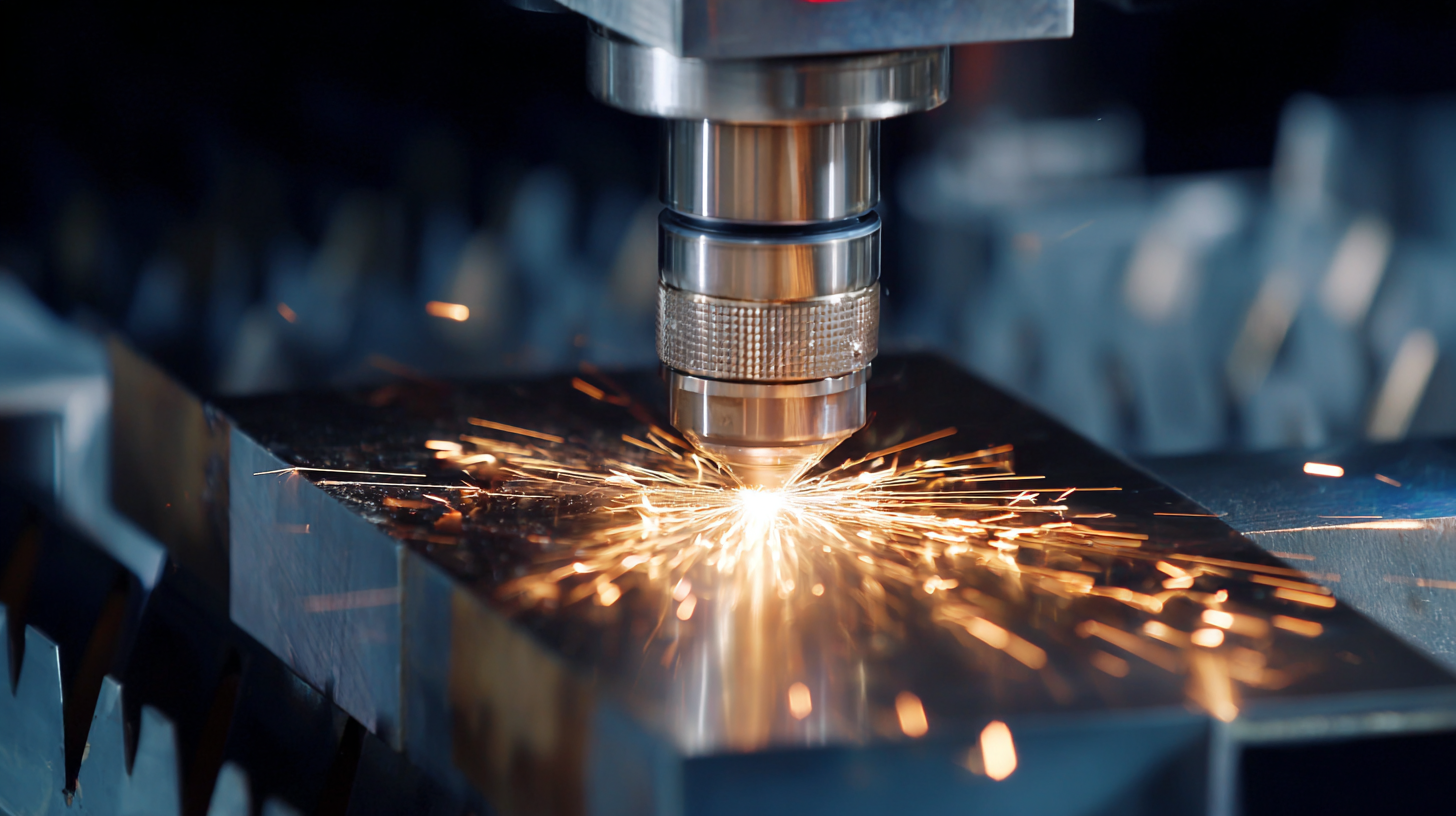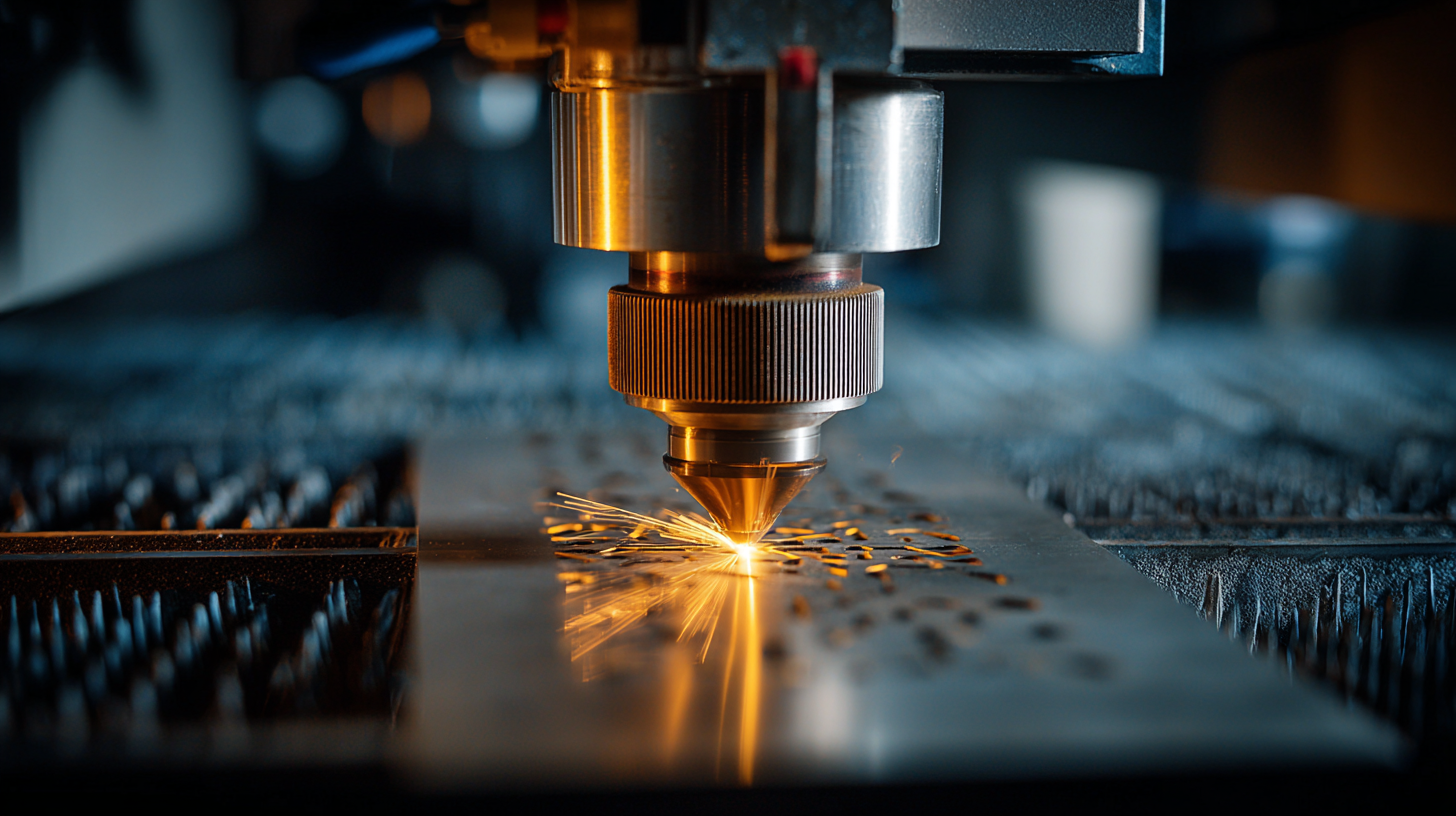Unlocking Precision in Manufacturing with Laser Marking Machines and Their Impact on Production Efficiency
In the competitive landscape of modern manufacturing, maintaining high precision and efficiency is paramount, and the integration of advanced technologies can be a game-changer. One such innovation is the laser marking machine, which has emerged as a critical tool in enhancing production processes. According to a report by MarketsandMarkets, the global laser marking machine market is projected to grow from USD 3.3 billion in 2021 to USD 5.1 billion by 2026, reflecting a CAGR of 9.0%. Laser marking machines not only ensure high-quality markings that are durable and resistant to wear but also significantly reduce operational costs and downtime. By automating the marking process, manufacturers can achieve greater accuracy and faster turnaround times, ultimately driving productivity and offering a competitive edge in the marketplace. As industries continue to evolve, the adoption of laser marking technology will be essential for optimizing production efficiency and meeting the increasing demands for precision and quality.

The Evolution of Laser Marking Technology in Manufacturing Processes
The evolution of laser marking technology has dramatically transformed manufacturing processes, enhancing precision and efficiency. Initially relied upon for simple identification tasks, laser marking machines now offer intricate designs and durable markings that withstand intensive manufacturing environments. This advancement allows manufacturers to meet stringent quality standards while optimizing workflows.
As industries increasingly adopt laser marking, the benefits are evident. These machines reduce production times and the need for manual intervention, leading to lower labor costs and fewer errors. Companies are leveraging these technologies not only to improve their output quality but also to personalize their products, catering to evolving consumer preferences.
Tips: When considering laser marking for your manufacturing operations, evaluate the compatibility of the technology with your current systems. Investing in machines that offer software integration can streamline your processes significantly. Additionally, stay updated on the latest advancements in laser technology to ensure your production methods remain at the forefront of industry standards.

Comparative Analysis of Laser Marking vs. Traditional Marking Techniques
Laser marking has increasingly become a critical tool in enhancing production efficiency within the manufacturing industry. Compared to traditional marking techniques, laser marking offers superior precision and reliability. The global coding and marking equipment market, which encompasses various marking technologies, is projected to continue expanding, with significant growth driven particularly by laser-based solutions. By 2032, the non-metal laser engraving machine market alone is anticipated to reach a valuation of $5.759 billion, growing at a compound annual growth rate (CAGR) of 6.1%. This growth reflects a broader trend towards automation and precision that laser systems bring into manufacturing operations.
Traditional marking techniques often rely on ink or mechanical engraving, which can produce less durable results and require more maintenance. In contrast, laser marking provides a permanent, high-quality solution that can significantly reduce production downtime and waste. Industry reports indicate that the laser equipment market in China is expected to surpass 107 billion yuan by 2024, with laser cutting equipment accounting for over 40% of this market share. The continuous advancements in laser technology, coupled with increasing demand for high precision in manufacturing processes, make laser marking an essential consideration for manufacturers aiming to stay competitive and efficient in today's market.
Unlocking Precision in Manufacturing with Laser Marking Machines and Their Impact on Production Efficiency
| Technique | Precision Level | Speed (Units/hour) | Cost per Marking | Setup Time (minutes) | Durability |
|---|---|---|---|---|---|
| Laser Marking | High | 200 | $0.05 | 10 | Excellent |
| Inkjet Marking | Medium | 150 | $0.10 | 20 | Fair |
| Dot Peen Marking | Medium | 100 | $0.15 | 15 | Good |
| Chemical Etching | Low | 75 | $0.20 | 30 | Moderate |
Quantifying the Impact of Laser Marking on Production Efficiency Metrics
Laser marking machines are transforming the landscape of manufacturing by providing precise and efficient marking solutions that enhance production efficiency metrics. The ability to create high-quality, durable markings on a variety of materials reduces the need for post-processing and minimizes waste, leading to significant improvements in overall production flow. Additionally, the integration of laser marking technology helps in maintaining consistent quality, which is crucial for adhering to industry standards and client requirements.
Tip: When implementing laser marking machines, consider running initial pilot tests to fine-tune settings for different materials. This step can help in optimizing the marking speed and depth, ultimately leading to better performance and productivity.
Moreover, companies that adopt laser marking often see faster turnaround times in their production cycles. Since laser marking is a non-contact process, it eliminates the risks associated with traditional marking methods, such as mechanical damages and misalignment. This not only streamlines operations but also contributes to higher output rates, helping manufacturers meet increased market demands more effectively.
Tip: Regular maintenance of laser marking equipment is essential to ensure peak performance and longevity. Schedule routine inspections and cleanings to prevent downtime and maintain efficiency.
Impact of Laser Marking on Production Efficiency Metrics
Case Studies: Successful Implementations of Laser Marking Machines
Laser marking machines have emerged as a key technology in enhancing production efficiency within various manufacturing sectors. Their precision and speed significantly reduce the time required for marking products, which is particularly valuable in industries where traceability and brand identity are critical. For instance, the incorporation of such machines allows manufacturers to implement complex designs and serial numbers without compromising on quality, ultimately leading to lower error rates and increased output.
Recent case studies illustrate the successful implementation of laser marking technology across diverse industries. Notably, innovative companies have presented advanced solutions, such as smooth-edge cutting technologies, which complement laser marking by streamlining production processes. These integrations not only optimize operational efficiency but also meet stringent quality requirements. As industries pivot towards automation and smarter manufacturing practices, the role of laser marking machines continues to expand, driving significant improvements in productivity and market competitiveness.
Future Trends: Innovations Shaping the Next Generation of Laser Marking in Industry
The laser marking industry is witnessing significant innovations that are shaping its future and elevating production efficiency across manufacturing sectors.
 With the global laser processing market projected to expand from USD 26.56 billion in 2025 to USD 42.73 billion by 2030, companies are increasingly investing in advanced laser technologies. These innovations are enhancing precision in coding and marking, crucial for product identification and quality assurance, ultimately leading to streamlined operations and reduced error rates in production lines.
With the global laser processing market projected to expand from USD 26.56 billion in 2025 to USD 42.73 billion by 2030, companies are increasingly investing in advanced laser technologies. These innovations are enhancing precision in coding and marking, crucial for product identification and quality assurance, ultimately leading to streamlined operations and reduced error rates in production lines.
Emerging trends in the sector highlight the growing importance of automation and precision engineering. The demand for laser marking machines is expected to rise, with the market projected to hit USD 13.8 billion by 2035 and a compound annual growth rate (CAGR) of 5.9%. Additionally, sectors such as microfabrication and 3D printing are leveraging laser technology, offering new avenues for creativity and efficiency. As industries adapt to these advancements, laser marking will undoubtedly play a pivotal role in transforming production methods and enhancing competitive advantages in the marketplace.
Machine models and specifications are subject to change without notice.

